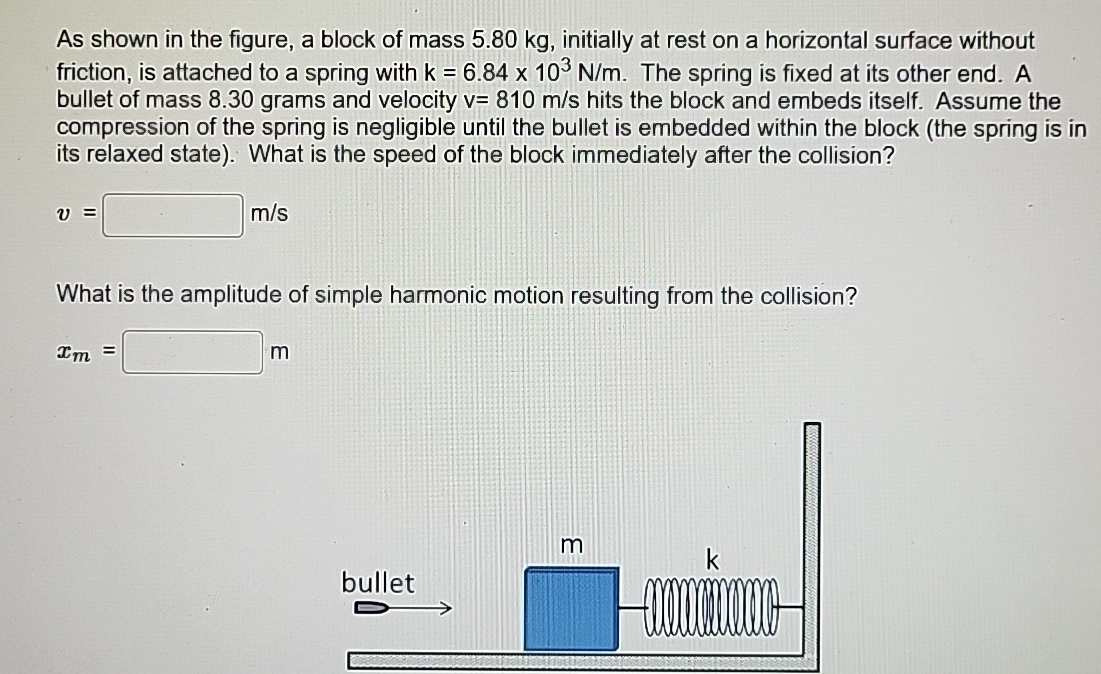As shown in the figure, a block of mass 5.80 kg, initially at rest on a horizontal surface without friction, is attached to a spring with k = 6.84×103 N/m. The spring is fixed at its other end. A bullet of mass 8.30 grams and velocity v = 810 m/s hits the block and embeds itself. Assume the compression of the spring is negligible until the bullet is embedded within the block (the spring is in its relaxed state). What is the speed of the block immediately after the collision? v = m/s What is the amplitude of simple harmonic motion resulting from the collision? xm = m
